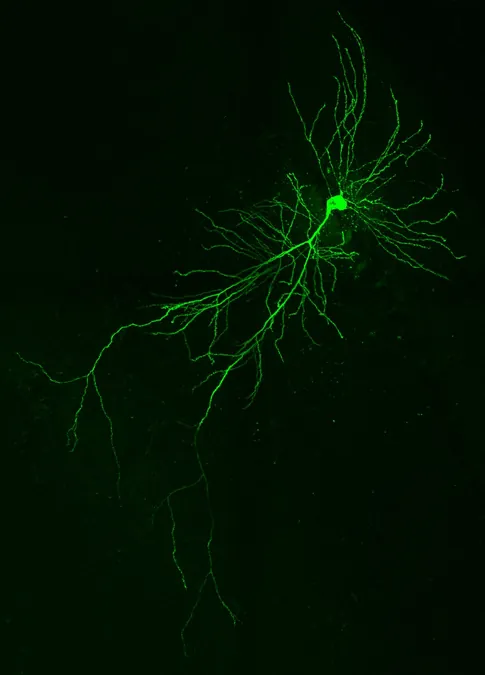
Unlocking Memory: A Nine-Letter Protein Fragment Exclusive to Neurons
2025-05-13
Author: Daniel
The Fascinating World of Cell Splicing
Cells possess a remarkable ability known as splicing, allowing them to cut and rearrange a gene's message to create various protein forms. This intricate process is especially prevalent in the brain, making it a hotbed for evolutionary adaptation.
The Neuronal Discovery that Could Change Our Understanding of Memory
In a groundbreaking study by researchers at the Center for Genomic Regulation (CRG), a nine-amino-acid protein fragment termed a "microexon" was identified, which is uniquely present in neurons. This microexon plays a pivotal role in neuronal development, influencing memory function significantly, as reported in the prestigious journal Nature Communications.
The Hidden Impact of the Microexon
DAAM1, the protein that integrates this crucial microexon, helps maintain neuronal shape and mobility. Deleting this fragment in mice appeared harmless at birth; however, as the mice matured, their brains exhibited half the normal number of "learning spines," key components for forming new memories and efficient synaptic connections.
Less Memory, More Implications
The implications are staggering—mice missing the microexon recalled roughly 40% less in standardized memory tests. "The neurons looked almost normal, yet their ability to communicate and process information was compromised. They can't build connections effectively, which hinders memory retrieval," explained Dr. Patryk Poliński, a key researcher from CRG.
Turning Back the Clock on Memory Loss
In a fascinating twist, the team chemically modified an overly active signaling pathway in the affected neurons, leading to partial recovery of neuronal firing and memory function. "This shows that memory recovery is possible when the right molecular switch is activated," stated Dr. Mara Dierssen, co-corresponding author of the study.
Evolution's Signature: A Nine-Letter Legacy
The conservation of this microexon across species, including sharks—whose lineage diverged from humans hundreds of millions of years ago—highlights its significance. "Such preservation indicates that these nine amino acids are critical for neuronal function and memory wiring," emphasized Manuel Irimia, another co-corresponding author.
A Window into Learning Disabilities
Past studies by Dr. Irimia revealed that a unique set of neuron-specific microexons is often absent in individuals with autism spectrum disorders. With over 300 microexons in the human brain, the potential for uncovering links to learning disabilities is enormous.
Looking Ahead: The Future of Cognitive Research
The research team is delving into human genetic databases, seeking rare variants that might involve the deletion of the DAAM1 microexon, potentially correlating with learning disorders. Further exploration is underway to identify other microexons that could similarly influence cognitive abilities.


 Brasil (PT)
Brasil (PT)
 Canada (EN)
Canada (EN)
 Chile (ES)
Chile (ES)
 Česko (CS)
Česko (CS)
 대한민국 (KO)
대한민국 (KO)
 España (ES)
España (ES)
 France (FR)
France (FR)
 Hong Kong (EN)
Hong Kong (EN)
 Italia (IT)
Italia (IT)
 日本 (JA)
日本 (JA)
 Magyarország (HU)
Magyarország (HU)
 Norge (NO)
Norge (NO)
 Polska (PL)
Polska (PL)
 Schweiz (DE)
Schweiz (DE)
 Singapore (EN)
Singapore (EN)
 Sverige (SV)
Sverige (SV)
 Suomi (FI)
Suomi (FI)
 Türkiye (TR)
Türkiye (TR)
 الإمارات العربية المتحدة (AR)
الإمارات العربية المتحدة (AR)